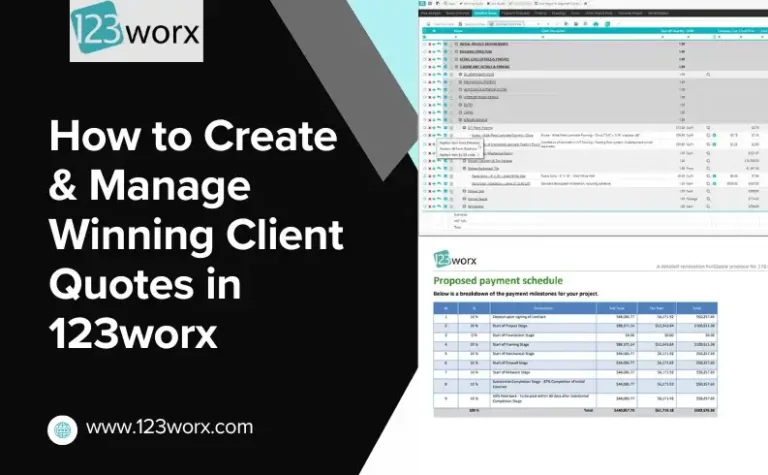Accountability is not merely being a timer to deadlines, but being responsible for the ends. With the fast-paced business environment of today, and remote and hybrid teams being a reality, accountability has become a building block to productivity and trust. When employees know exactly their role and deliver on promises, projects run smoothly, communications are enhanced, and the mood picks up.
Companies that nurture a culture of accountability enjoy roughly 50 % better team performance and a 27 % boost in employee engagement, according to Gallup research. Yet many organizations still find it difficult to create a setting where accountability can thrive. For accountability to become second nature, leadership, processes, and cultural norms must all align and reinforce one another.
Here you’ll discover seven tried-and-true methods for increasing team responsibility, developing ownership throughout every level, and instilling a natural performing, trusting, and long-haul successful company culture.
What is Team Accountability (and Why It’s Not Micromanagement)
Accountability gets confused a lot. It’s not finger-pointing or micromanaging; it’s about being accountable for both the outcome and procedure. Real accountability comes when each team member comprehends how his or her task supports shared objectives and has ownership in the outcome, not just the activity.
For instance, a marketing executive does more than run campaigns; he or she makes sure those campaigns produce quantifiable outcomes. Accountability relates work to consequence.
Leaders are key to this: by expecting the clear, communicating the appropriate tools, and leading transparently, they enable employees to step forward instead of pointing fingers. When ownership is a shared value, it makes teams shift from reactive to proactive, from task completion to consistent deliverables.
Top Challenges That Undermine Accountability in Teams
Even the most talented people can underperform if systems and culture are lacking.
Common issues include:
- Blurred responsibilities – Where roles are merged or undefined, ownership suffers.
- Inadequate communication – When no one knows who’s responsible for what, projects are abandoned.
- Feedback absent – Employees can’t improve without knowing what’s broken.
- Fear of failure – When mistakes are punished rather than lessons learned, people play it safe.
Remote working has added another layer for managers to keep track of activity. Modern accountability software can help address these gaps by offering real-time visibility, automated reporting, and transparent role tracking.
Good news?
Those challenges are manageable with the proper combination of leadership practices and Information Technology that fosters clarity, collaboration, and continuous improvement.
7 Ways to Improve Team Accountability & Build a Stronger Workplace
1. Set Clear Roles and SMART Goals to Strengthen Accountability
Clarity leads to accountability. If a team does not know what to do or why, nothing can be held against them. Begin with SMART goals (Specific, Measurable, Achievable, Relevant, and Time‑oriented). Ensure that everybody understands not only what to do but why.
Clarity transforms accountability from a buzzword into a measurable standard for performance.
Use graphical tools such as RACI charts (R- Responsible, A- Accountable, C- Consulted, I- Informed) to map out responsibilities and accountabilities in complicated projects. It clarifies nothing, provides each individual a window to their lane, and gives leaders a clear view of ownership in each phase.
For instance, in a construction crew, a member can handle scheduling, a second quality control, and a third client communication. With specific role assignments, one can measure the performance and impose accountability.
2. Use Transparent Workflows to Make Accountability Visible
Accountability does best when everybody gets to see the whole picture. Transparent workflows make it possible to track progress, dependencies, and bottlenecks in real time.
Use digital project-management tools such as Asana, Trello, or any other that gives a matter of task transparency and supports being able to display workflows.
Explore how renovation project management software supports real-time visibility and cross-team accountability.
With each task, due date, and owner listed on a shared board, confusion is decreased, and excuses are minimal. Visibility encourages self‑accountability: people are much more likely to deliver against commitments when their own work is out there for the team to see.
3. Lead by Example: How Leadership Shapes Accountability Culture
Leadership Defines Culture. When leaders assume ownership of their decisions, take responsibility for mistakes, and follow through on commitments, employees will too. When leaders blame or over-delegate with little authority, accountability disappears.
It makes you a leader of self-transparency and self-honesty. Admit you are mistaken, take ownership of your fallen objectives, and trade lessons. It builds safety psychologically and makes the team do the same.
For instance, if a project manager speaks openly about a flop of a campaign and stresses solutions rather than blame, the team learns that blame translates to growth. Leading from the front isn’t just right, it’s smart. It’s a trickle-down ingredient that increases trust and company performance throughout the company.
Leaders who use data-driven accountability dashboards can demonstrate transparency that inspires teams to follow suit.
4. Encourage Open Feedback Loops and Consistent Check-Ins
Teams cannot be blamed without continuous feedback. Ongoing communication offers a means to catch small issues when they remain solvent. Establish a rhythm of daily or weekly check-ins, personal meetings, and retros to make blame ongoing.
Create a forum for employees to discuss issues among themselves without reprisal. Feedback that builds, not criticizes. Encourage upward communication; employees often have a clearer perspective to perceive issues that leaders are blinded to.
With communication software like Slack or Microsoft Teams, it’s clear communication that can be audited. Open communication ensures that every promise has a follow-up and every milestone gets cheered. It ends up being a workplace where accountability gets discussed in daily chatter and not after.
Tracking discussions and action items through digital tools like 123worx or Slack integrations keeps accountability traceable and consistent.
5. Recognize and Reward Accountability to Reinforce Behavior
Positive reinforcement constructs enduring accountability. When employees are consistent in accepting ownership, they ought to be rewarded, not just for being successful but for integrity and follow-through.
Establish reward systems that call out responsible behavior: public recognition, team acknowledgment, or developmental opportunities. Acknowledging effort reiterates that being responsible is respected, not merely assumed.
For instance, an organization can initiate a “Ownership Champion” feature in its company newsletter once a month, highlighting employees who own issues proactively. It makes repetition fostered by recognition a positive force and transforms ownership into a motivator, and not a hassle.
When you reward good behavior, other members are likely to follow, building a snowball of trust and reliability between teams.
Use internal dashboards to track recognition and highlight top performers in real time — public praise magnifies accountability.
6. Use Digital Tools to Strengthen Accountability and Visibility
Accountability and data are two sides of a coin. The more measurable your workflow is, the easier it is to be accountable. Modern software solutions remove uncertainty while illuminating every step in project development.
Such as 123worx, Monday.com, or ClickUp, which give you real-time insights into project schedules, project tasks, and completion percentages. With dashboards that display who’s doing what, issues become apparent before delays happen.
Automation also makes sure updates are standardized, progress reports, approvals, and notifications occur without manual tracking. It keeps the team informed and decreases administrative costs.
With digital systems, accountability gets quantified, making it transparent and equitable, and allowing both team members and leaders to perform to the fullest.
Look for accountability platforms that blend automation with human insight, ensuring that data drives action, not just reporting.
7. Build Trust: The Hidden Engine Behind Accountability
According to Google’s Project Aristotle, psychological safety was the number one factor in determining high-performing teams.
Accountability thrives in a trusting environment. When workers are comfortable telling you when you are wrong, owning their errors, and exchanging ideas, they own more.
Leaders should cultivate psychological safety, ensuring that honest expression won’t trigger punishment. Encourage learning from mistakes rather than covering them up. When failure turns into feedback, teams innovate faster and stay committed to results.
For example, after a project delay, don’t blame fingers but conduct a “lessons learned” to establish root causes and prevent recurrence. It fosters mutual respect and ongoing improvement.
Trust makes accountability an obligation to pride, in which each team member really does own shared success.
Keep Accountability Alive with Continuous Improvement
Holding somebody accountable isn’t a single activity; it’s a daily process. Developing long-haul habits involves incorporating accountability into daily workflows, meetings, and performance metrics.
Set regular review of accountability, brief sessions to review progress, obstacles, and remedies. Integrate accountability objectives in the evaluation of performances and provide rewards for consistency as opposed to perfection.
Foster peer responsibility, in which peers hold each other’s commitments against each other. This mutual sense of responsibility maintains high levels of motivation and forges unity.
By making accountability a dynamic process, not a to-do list, you build a flexible team culture that adapts, learns, and delivers, regardless of the challenge.
Learn more about measuring ROI in project management in our project management software ROI guide.
How to Measure Accountability and Prove Its ROI
You can’t perfect something you don’t measure. Monitoring accountability serves to verify efforts and identify areas that require correction.
Key performance indicators (KPIs) include:
- On-time task completion rate
- Frequency of follow-ups
- Employee engagement and satisfaction levels
- Decrease project delay or rework
Utilize analytics dashboards to display performance and disseminate insight to the team. Acknowledging progress solidifies accountability and provides a constant rate of growth.
When workers can see measurable gains related to their ownership, it boosts motivation, and you have a virtuous cycle of trust, commitment, and delivery.
Case Study: How a Design Firm Boosted Performance Through Accountability
A firm of mid-size design firm was delaying deadlines and losing clients based on confused ownership. It implemented clear workflows enabled by 123worx and introduced a weekly review of accountabilities.
Within three months:
- Delays in projects decreased by 40%.
- Satisfacción del equipo aumentó un 25
- Client retention has been significantly enhanced.
The magic wasn’t new skills; it was a new mindset. When teams knew what was expected, shared information openly, and had transparency to progress, accountability became a second habit.
This evolution demonstrates that when you have the right culture and digital enablement, accountability makes chaos become cohort, and teams become reliable collaborators.
Choosing the Best Accountability Software for Your Team
All accountability tools are not equal. The finest systems balance simplicity, integration, and flexibility. Consider the following before implementing one:
- Ease of use: Will it be widely accepted in your team?
- Integration: Does it also integrate with your CRM, calendar, or communication tools?
- Customization: Is it able to fit your workflow?
- Analytics: Does it deliver quantifiable insights about performance?
For maturing businesses, there’s 123worx that provides an integrated platform of scheduling, reporting, and collaboration, suitable for construction, design, and service companies.
Selecting the correct software consists of facilitating simplicity, not complexity. Software that favors transparency and sharing inherently promotes team responsibility.
For a detailed comparison, check our home builder project management software guide to see how tools like 123worx simplify accountability.
Final Thoughts: Turning Accountability into Results and Trust
Ownership isn’t about squeezing your team; it’s about building clarity, trust, and shared goal alignment. It naturally springs from well‑defined expectations, open dialogue, and tools that keep everything transparent.
In today’s fast‑moving, cut‑throat environment, teams that operate from a sense of ownership outpace those that cling to control. They’re nimbler, collaborate more smoothly, and consistently hit their targets.
As a leader, your role is to forge a culture and supply the setting of trust, openness, and the right tools where accountability can thrive. Keep it simple: spell out roles and duties, use clear‑cut workflows, and honor ownership.
When ownership becomes woven into your team’s DNA, everything else falls into place: stronger, high‑performing relationships, elevated results, and a culture that shares the triumph of success.

As a Vice President at 123worx, Construction Management Platform, Bharat Rudra has worked with hundreds of business executives searching for best-suited software for their construction business with a wide array of requirements. Bharat takes pride in helping construction businesses solve their business and project management challenges. Feel free to reach Bharat if you have any questions. You can find him on LinkedIn or reach him at brudra@123worx.com













